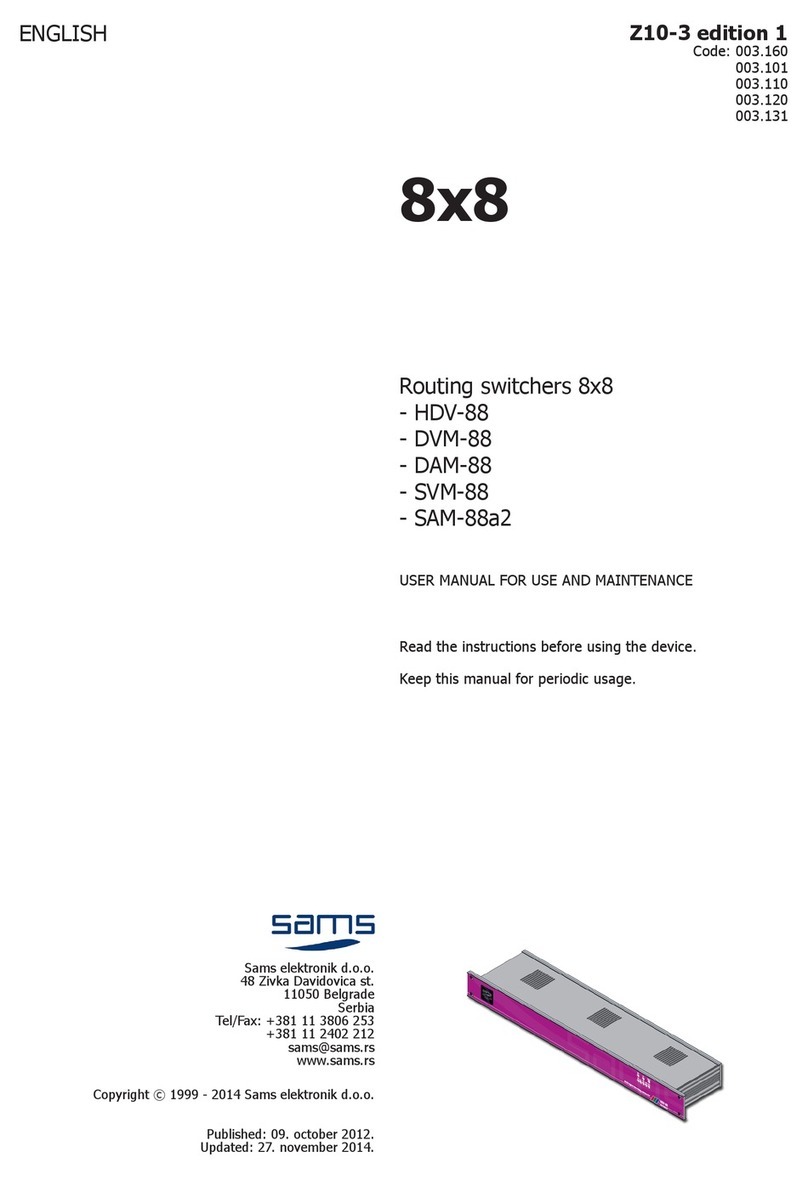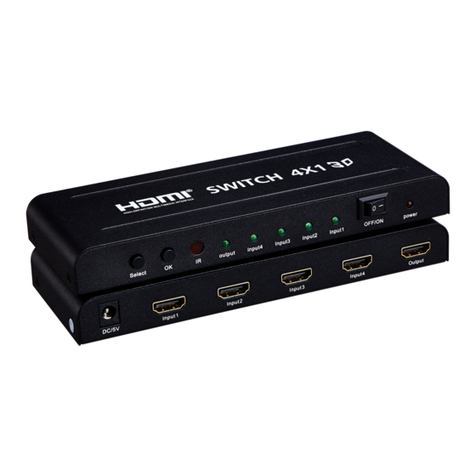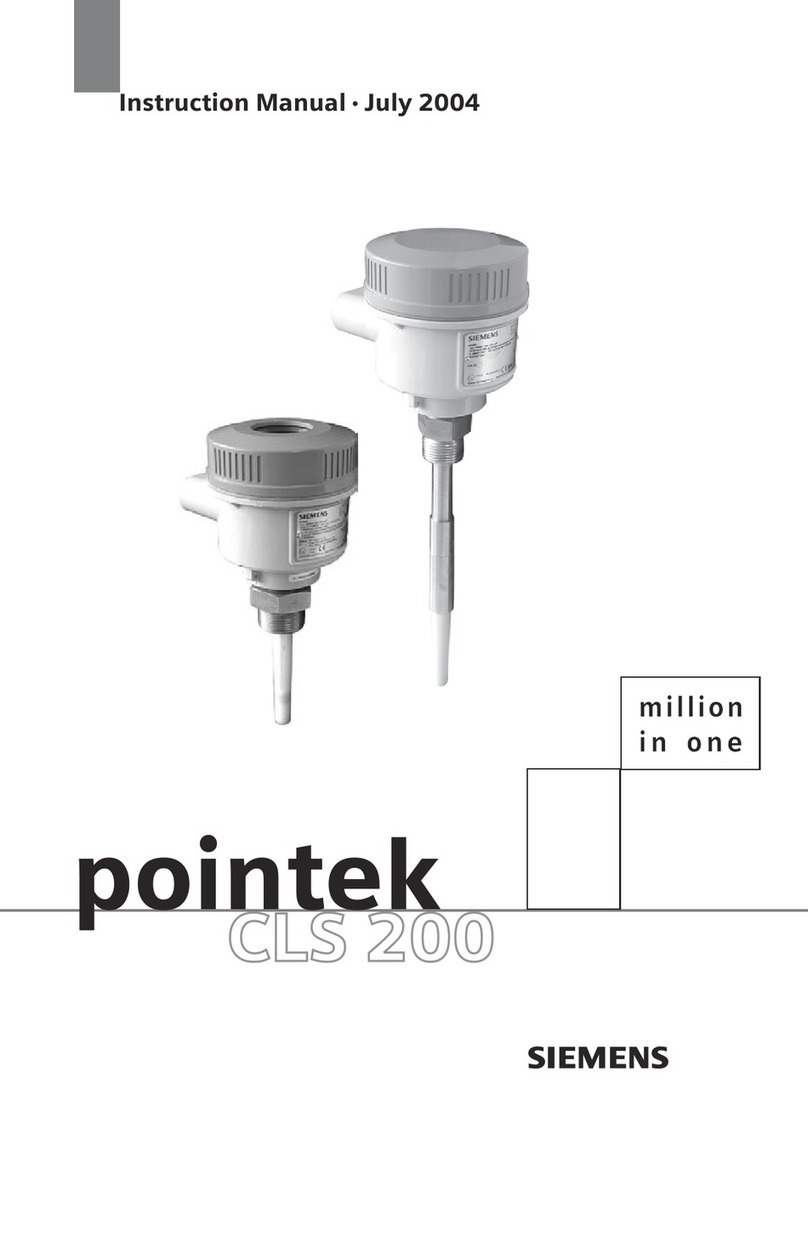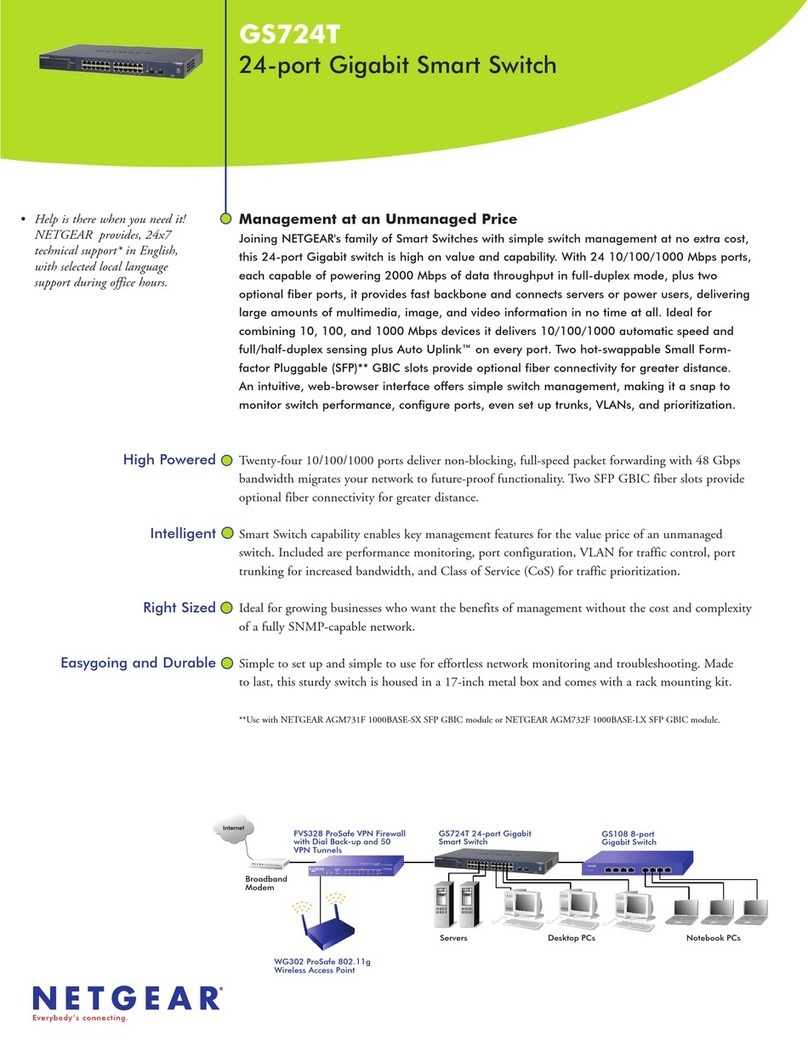DLS 50 User manual

Operating Manual
DLS 50
ISDN Wireline Simulator
Revision 5
January 1, 2000
TestW rks


Page i
TABLE OF CONTENTS
1. INTRODUCTION................................................................1
1.1 About this Manual................................................................. 1
1.2 Receiving and Unpacking the Unit ........................................ 1
1.3 DLS 50 Overview.................................................................. 2
2. ISDN BACKGROUND........................................................5
2.1 The ISDN U-Interface ........................................................... 5
2.2 ANSI Specifications............................................................... 6
3. OPERATION .......................................................................7
3.1 Powering On the DLS 50....................................................... 7
3.2 Connecting the DLS 50.......................................................... 9
3.3 Changing the Cable Length................................................... 9
3.4 Configuring the DLS 50........................................................10
4. REMOTE CONTROL.......................................................13
4.1 IEEE 488 Interface...............................................................14
4.1.1 IEEE 488.1 Interface functions supported...............................14
4.1.2 IEEE 488 Address ..................................................................14
4.1.3 The SRQ Line......................................................................... 14
4.1.4 Resetting the DLS 50..............................................................16
4.1.5 Message Terminators.............................................................. 16
4.2 RS-232 Serial Interface ........................................................16
4.2.1 Baud Rate...............................................................................17
4.2.2 Data Format............................................................................17
4.2.3 Flow Control...........................................................................17
4.2.4 Message Terminators.............................................................. 19
4.3 Data formats.........................................................................19
4.4 Command Syntax..................................................................20

Page ii
4.5 Status Reporting...................................................................21
4.5.1 Status Byte Register (STB)......................................................22
4.5.2 Event Status Register (ESR)....................................................23
4.6 Common Command Set........................................................24
4.7 Device Dependent Command Set..........................................30
4.7.1 :SETting:CHANnel:LENgth <NRf> .......................................30
4.7.2 :SYStem:COMMunicate:GPIB:ADDRess <NRf> ...................31
4.7.3 :SYStem:COMMunicate:SERial:BAUD <NRf>......................31
4.7.4 :SYStem:COMMunicate:SERial:FORMat <format>...............32
4.7.5 :SYStem:COMMunicate:SERial:PACE <pace>......................33
4.8 DLS 50 Synchronization.......................................................34
4.9 References.............................................................................35
5. WARRANTY......................................................................36
6. SHIPPING THE DLS 50....................................................38
7. SPECIFICATIONS............................................................39
7.1 ELECTRICAL.....................................................................41
7.1.1 AC Power............................................................................... 41
7.2 ENVIRONMENTAL...........................................................41
7.3 MECHANICAL...................................................................41
7.4 OPERATING CONDITIONS.............................................41
8. SAFETY .............................................................................43
8.1 INFORMATION..................................................................43
8.1.1 Protective Grounding (Earthing)............................................. 43
8.1.2 Before Operating the Unit....................................................... 43
8.1.3 Supply Power Requirements....................................................43
8.1.4 Mains Fuse Type.....................................................................44
8.1.5 Connections to a Power Supply...............................................44
8.1.6 Operating Environment ..........................................................44
8.1.7 Class of Equipment.................................................................44
8.2 INSTRUCTIONS.................................................................44

Page iii
8.2.1 Before Operating the Unit....................................................... 45
8.2.2 Operating the Unit..................................................................45
8.3 SYMBOLS ...........................................................................46
INDEX.......................................................................................47


Introduction
Page 1
1. INTRODUCTION
1.1 About this Manual
The DLS 50 Operating Manual can be used to learn about the unit for the first time, or
can be used as a look up reference book. We suggest that you carefully read the
introduction sections of this manual before powering on your unit. Failure to do so
could damage your DLS 50.
If you still have questions after reading this manual, please contact your DLS TestWorks
sales representative or our customer service department at the location shown in section
5, "Warranty" of this manual. If you have any suggestions as to how this manual could
be improved, please write to us at the same address.
Thank you for your business and for choosing DLS TestWorks.
1.2 Receiving and Unpacking the Unit
The DLS 50 has been shipped to you in a reinforced cardboard shipping container. We
recommend that you retain this carton for any future shipments.
Please check that you have received all the items as per the packing list and report any
discrepancies as soon as possible. Please also note that some options are installed within
the chassis of the main unit and can only be checked by powering on the unit.
The DLS 50 supports many AC voltages found in various parts of the world. We have
already selected the voltage appropriate to your country according to the information we
had. But errors do occur... so read section 3.1 "Powering on the DLS 50" before
switching on the DLS 50.

Introduction
Page 2
1.3 DLS 50 Overview
The DLS 50 simulates a 2 wire length of cable using standard DLS TestWorks ISDN
bandwidth ladders. The user can easily change the length of the simulated cable by
using the front panel of the DLS 50 or by using a computer. It is meant to be used in
laboratories, production lines etc. to simulate "real life" wireline situations on bench top.
The DLS 50 can be ordered in various gauges and in 2 lengths, standard and extended .
The user can purchase the standard unit, and then later decide to upgrade to the
extended version.
The devices under test are connected to the DLS 50 using either the RJ-45 connectors or
the terminal block, located at the front or at the back. All the connectors on each side
are connected in parallel.
The unit can be controlled via the IEEE 488 and the RS-232 serial interfaces. One
simple command is all that is needed to set the channel length, but other IEEE 488.2
and SCPI commands are also supported.
The main component of the DLS 50 is the mother board, which holds
•The simulation circuitry
•The microprocessor and all the control logic
•The power supply
•Analog connectors (RJ-45 and terminal block)
•Digital Interfaces (RS-232 and IEEE 488)
The mother board has a front panel board attached which holds the display and the keys.
The components are mounted on a frame which slides into a housing. The dimensions of
the assembled unit are approximately 2.5H x 17.0W x 15.0D (6 cm H x 43 cm W x 38
cm D), and weight about 10 lbs (4.5 kg).

Introduction
Page 3
The standard DLS 50 simulates 12 kft or 3.6 km of wireline. The extended version
provides an additional 8 kft or 2.4 km of wireline. The various types of DLS 50 that are
presently available are:
Standard DLS 50 Extended DLS 50
22 AWG, 12 kft 22 AWG, 20 kft
24 AWG, 12 kft 24 AWG, 20 kft
26 AWG, 12 kft 26 AWG, 20 kft
0.4 mm PE, 3.6 km 0.4 mm PE, 6.0 km
0.6 mm German, 3.6 km 0.6 mm German, 6.0 km
Fig. 1.1 The DLS 50's Front Panel
1. Liquid crystal display (LCD).
2. Menu control / setup keys.
3. RJ-45 modular connector for device under test, one on each end of the
wireline (internally connected to items 9, 10 and 11).
4. Power switch

Introduction
Page 4
Fig. 1.2 The DLS 50's Back Panel
5. AC power input plug
6. Power voltage selector and fuse case
7. IEEE 488 interface connector for remote control.
8. RS-232 serial interface connector for remote control.
9. Modular connector for device under test (internally connected to items 3,
10 and 11).
10. Modular connector for injection of impairments (internally connected to
items 3, 9 and 11).
11. Terminal strip for connection to device under test (internally connected to
items 3, 9 and 10).

Getting Started
Page 5
2. ISDN BACKGROUND
The Integrated Services Digital Network (ISDN) emerged in the late 1970's as a means
of integrating different information streams, and re-implementing the analog network at
that time into a digital transmission scheme. This development was a result of the
demand from corporate users. The ISDN concept materialized when the CCITT (The
International Telephone and Telegraph Consultative Committee) employed the concept
and started developing a set of standards for a universal Integrated Services Digital
Network.
ISDN has a very broad specification which includes Primary Rate (1.544 Mbps
composed of 23 x 64 kbit/sec. B channels plus 1 x 64 kbit/sec. D channel in N. America,
or 2.048 Mbps composed of 30 B channels plus 1 D channel in Europe), Basic Rate ( 2 x
64kbit/sec. B channels plus 1 x 16kbit/sec. D channel ), and Broadband ( video / data /
voice in various configurations ). Primary Rate requires a 1.544 Mbit/sec. connection for
its 24 channels (or 2.048 Mbit/sec. for 31 channels in Europe), and is meant for users
who require high-speed communications (e.g. Local Area Network). Basic Rate requires
a 144 kbit/sec.* connection for its three channels, and is meant for most end users.
Broadband can achieve transfer rates of 150 Mbit/sec, and is meant to integrate with the
broadband capability of fibre optics. The distribution of the ISDN signals is complex, as
they are being carried by the existing network. For the purposes of this manual, we will
concentrate on the distribution of ISDN signals at the basic rate from the central office
to the end user site.
* Depending on the interfaces, the total bit rate will be different. For the U-interface, the
total will be 160 kbps; for S/T interface, it will be 192 kbps.
2.1 The ISDN U-Interface
To and from the central office, basic rate ISDN signals are sent via the 2-Wire twisted
copper pair known as the U-Interface. These bi-directional 160 kbps (i.e. 144 kbps with
16 kbps overhead) signals are coded as either a 2B1Q signal, or a 4B3T signal
depending on the administration. The DLS 50 is especially suited to simulate line

Getting Started
Page 6
conditions for either of these. The signal is terminated at the customer premises via a
Network Terminator (NT).
The DLS 50 simulates the physical parameters of the U-interface in order to stress test
U-interface transmission products.
2.2 ANSI Specifications
ANSI specification T1.601 describes the physical characteristics of the two wire ISDN
U-Interface. Described are the limits (pulse masks etc.) of the signals as they are
specified on the U-interface, the physical cable specifications and the testing procedures
for devices which connect to the ISDN U-Interface.
Similar specifications have also been drafted by ETSI for the two wire U-Interface.

Getting Started
Page 7
3. OPERATION
3.1 Powering On the DLS 50
Before switching on the DLS 50, verify that the line voltage selection shown at the back
of the unit corresponds to the local line voltage. If it is different, then do the following:
•Remove the power cord
•Open the fuse box cover in the power module at the back using a small flat
screwdriver
•Pull the voltage selector card
•Turn the plastic knob until you have selected your local power voltage
•Put everything back together
•Check that the white dot is now beside your local line voltage.
The DLS 50 uses a two fuse configuration.
To operate the DLS 50, connect the unit to the power source, and turn on the unit.
One convenient feature of the DLS 50 is that the last configuration used is kept latched
into the relays, allowing the unit to be used even when the power is turned off. As an
option, the wireline length may be restored or reset to zero. There will be a short
disconnection at power up while performing the self-test.
On power up, the DLS 50 performs a self-test, and will show for about two seconds the
following screen:
DLS 50 PwrOn: EPROM: WireLn:
SelfTest DipSw: NVRAM: µ- Ctrl:
Fig. 3.1: Self-Test Screen

Getting Started
Page 8
The self-test results can be maintained on screen by keeping the left arrow key pressed
when the power is turned on. If one of the self-test fails, the DLS 50 will show an error
screen with some explanation of the problem, in which case call the factory. Following
is a short description of the self-test done by the DLS 50 after a reset.
PwrOn: The self-test will show "Yes" if the last reset was caused by a power
on, and will show "No" if it was caused by the IEEE 488 interface
EPROM: Check if the checksum of the EPROM is valid.
Ladder: Check if all the ladders and the relays are functional. This test is not
as extensive as the one done by the factory, but it provides an early
warning of possible failure.
DipSw: Check if the dip switch configuration is valid. The dip switch
indicates which type of ladders are installed in the DLS 50.
NVRAM: Check if the non volatile RAM and its imbedded battery are
functional. The battery has an expected life of over 10 years, and if
necessary, can easily be replaced.
µ-Ctrl: Check if the micro-controller is functional.
After the self-test, the display will show the type of the cable and the current cable
length.
A – 12000 ft – B DLS 50
24 AWG Max: 20000 ft
Fig. 3.2 Simulated Cable Length in feet
A – 6000 ft – B DLS 50
0.4 mm PE Max: 6000 m
Fig. 3.3 Simulated Cable Length in metres

Getting Started
Page 9
3.2 Connecting the DLS 50
The side A of the simulated wireline can be accessed from any of the RJ-45 connectors
labelled "A" at the front or at the back of the DLS 50, or from the terminal blocks at the
back of the DLS 50. The user can also inject impairments to side A of the wireline by
using the "noise" RJ-45 connector on the back of the DLS 50.
Side B of the simulated wireline can be accessed from any of the RJ-45 and terminal
blocks labelled "B" as explained above.
Note that all the RJ-45 connectors and terminal blocks on each side are connected in
parallel.
The DLS 50 provides a fully bi-directional wireline simulation.
Fig. 3.4 DLS 50 internal connection paths
3.3 Changing the Cable Length
The unit can be controlled via the 4 arrow keys on the front panel. The left and right
arrow keys select the digit to be set, and the up and down keys select the value of that
digit. When reaching the maximum or the minimum, the value stops changing. The
display will show the current length of the simulated cable, the type of wireline, and the
maximum length shown on the right bottom section of the screen.

Getting Started
Page 10
The resolution of the cable length is 100 ft for units that use feet, and 50 m for units that
use metres.
The DLS 50 sets the cable length after 1 second of keyboard inactivity .
3.4 Configuring the DLS 50
Pressing both the Left and Right arrow keys at the same time gets into the unit setup
menus, where some of the operational characteristics of the unit can be changed.
The user can move among the different fields using the Left and Right arrows. The Up
and Down arrows will change the setting of the selected feature. On any of the setting
screens, pressing both Left and Right arrow keys at the same time returns to the main
screen.
1 – LCD Contrast : 7 [0…10] More à
Fig. 3.5 LCD Contrast
To change the contrast of the display use the following steps:
•From the main screen, press both the left and right arrows simultaneously.
•Use the up and down arrows to select the desired contrast.
•Press the left and right arrows simultaneously to return to the main screen.
The contrast value is saved in non-volatile RAM, and will be restored on power up. The
default contrast is 7.
2 – IEEE 488 Address: 13 [0…30]
ßMore More à
Fig. 3.6 IEEE 488 Address

Getting Started
Page 11
To change the IEEE 488 address of the DLS 50 use the following steps:
•From the main screen, press both the left and right arrows simultaneously.
•Press the right arrow once to get to the IEEE 488 Address screen.
•Use the up and down arrows to select the desired address.
•Press the left and right arrows simultaneously to return to the main screen.
The address is saved in non-volatile RAM, and will be restored on power up. The
default is 13. See section 4.1.2 for more details.
3 – Serial: 9600 N81 Flow Ctrl:CTS
ßMore More à
Fig. 3.7 RS-232 Interface
To change the serial interface baud rate, data format or flow control, use the following
steps:
•Press both the left and right arrows simultaneously
•Press the right arrow until you get to the RS-232 Serial interface protocol
screen
•Use the up and down arrows to select the desired baud rate.
•Press the right arrow key
•Use the up and down arrows to select the desired data format.
•Press the right arrow key
•Use the up and down arrows to select the desired flow control method.
•Press the left and right arrows simultaneously to return to the main screen.
The parameters are saved in non-volatile RAM, and will be restored on power up. The
defaults are 9600, N81 and CTS. See section 4.2 for more details.
4 – Restore Setting on Power up: Yes
ßMore More à
Fig. 3.8 Restore on Power up

Getting Started
Page 12
On power up, the DLS 50 can restore the length of the wireline that was used when the
power was turned off, or it can set the length to 0. To change the setting use the
following steps:
•From the main screen, press both the left and right arrows simultaneously.
•Press the right arrow until you get to the Restore Setting screen.
•Use the up and down arrows to select the desired setting.
•Press the left and right arrows simultaneously to return to the main screen.
The setting is saved in non-volatile RAM, and will be restored on power up. The default
is yes.
5 – Checksum: 1A2B3C Version:05 RAM:OK
ßMore
Fig. 3.9 System Status
The last screen shows the checksum of the EPROM, the version of the firmware and the
non-volatile RAM state. No change can be done in that screen.

Remote Control
Page 13
4. REMOTE CONTROL
The DLS 50 can be remote-controlled via the IEEE 488 (also known as the GPIB bus)
and RS-232 (serial) interface, allowing the integration of the DLS 50 into a larger test
system.
The DLS 50 remote control is designed with several standards in mind:
•The GPIB physical interface follows IEEE 488.1. The functions
implemented are outlined in Section 4.1 "IEEE 488 Interface".
•The Common Commands follow IEEE 488.2.
•The Device Dependent Commands (see Section 4.7) are based upon the
Standard Commands for Programmable Interfaces (SCPI). However, we
had to create some device dependant commands since there was no pre-
defined SCPI command that could apply to the DLS 50.
•The serial port physical interface follows the EIA RS-232 standard.
The IEEE 488 and the serial interfaces are always enabled, and can be used
alternatively. The DLS 50 directs its output to the last interface it received data from.
Both interfaces use the same command set and produce the same results.
Section 4.1 and 4.2 describe the functions specific to one particular interface, the
remainder of section 4 describes the commands that are common to both interfaces.

Remote Control
Page 14
4.1 IEEE 488 Interface
4.1.1 IEEE 488.1 Interface functions supported
The IEEE 488.1 Interface functions supported by the DLS 50 are as follows :
SH1 Source handshake - full capability
AH1 Acceptor handshake - full capability
T5 Basic talker - serial poll, untalk on MLA
L3 Basic listener - unlisten on MTA
SR1 Service request - full
DC1 Device clear - full
C4 Respond to SRQ
E1 Open Collector drivers
RL1 Remote Local - full
These represent the minimum required to implement the IEEE 488.2 standard.
4.1.2 IEEE 488 Address
The IEEE 488 address of the DLS 50 can be set to any of the valid value as defined in
the IEEE 488.1 standard, which can be from 0 to 30. The address can be change by
using the front panel (see section 3.4) or remotely (see section 4.7.2).
4.1.3 The SRQ Line
The SRQ line, as defined by the IEEE 488.1 standard, is raised when the DLS 50 is
requesting service. Here are some examples of services that could raise SRQ:
•A message is available in the output buffer
•An error occurred
•All pending operations are completed
•The power was just turned on
Table of contents
Other DLS Switch manuals
Popular Switch manuals by other brands

Perle
Perle IDS-409F quick start guide
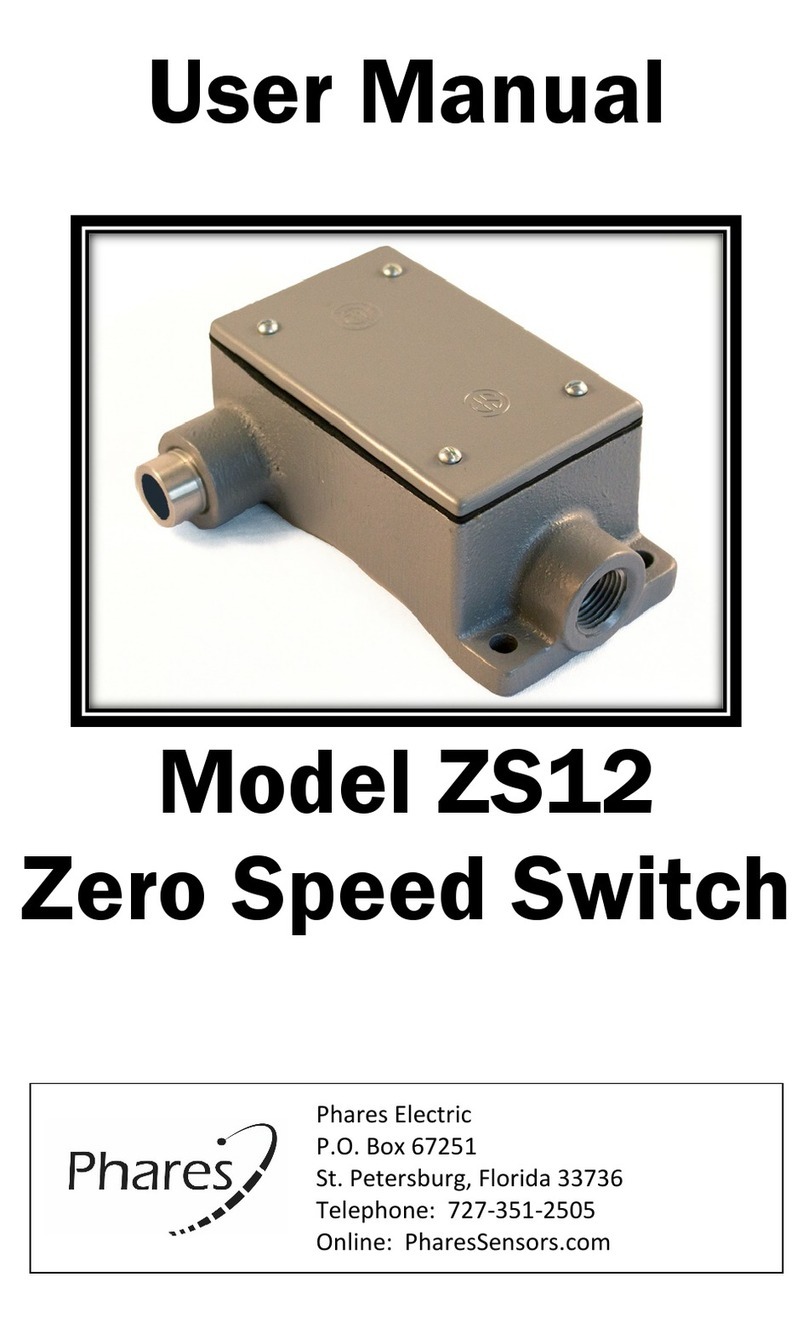
Phares Electric
Phares Electric ZS12 user manual
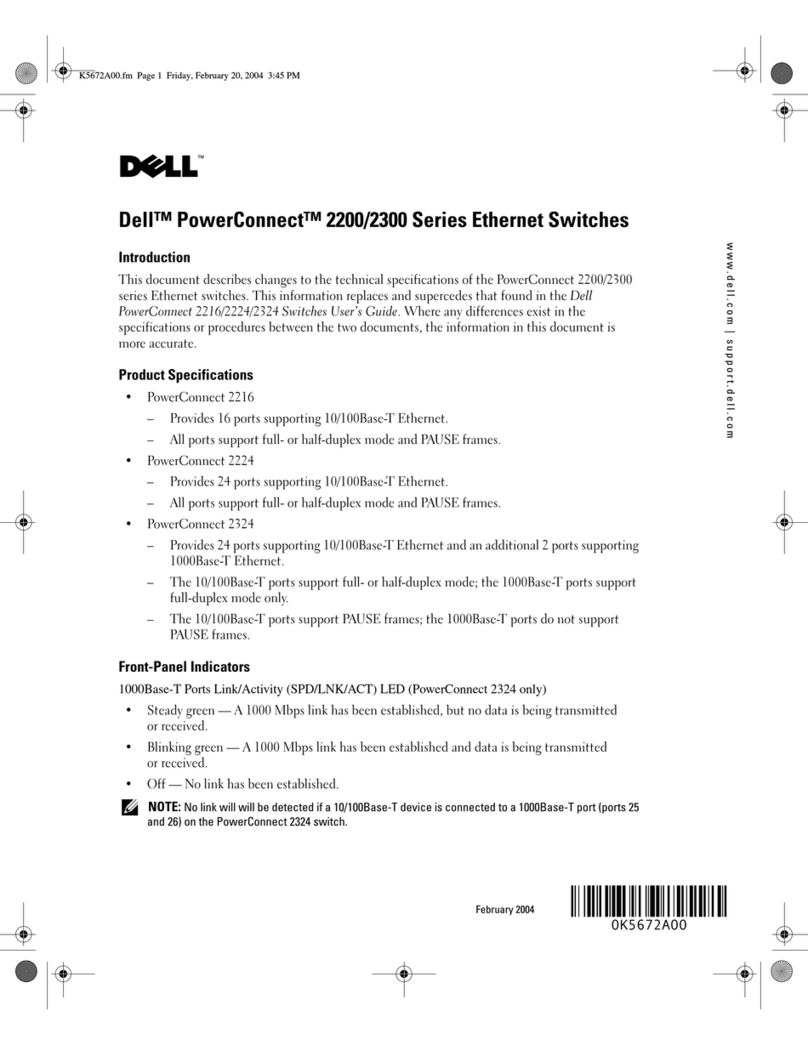
Dell
Dell PowerConnect 2216 Technical Specifications Update
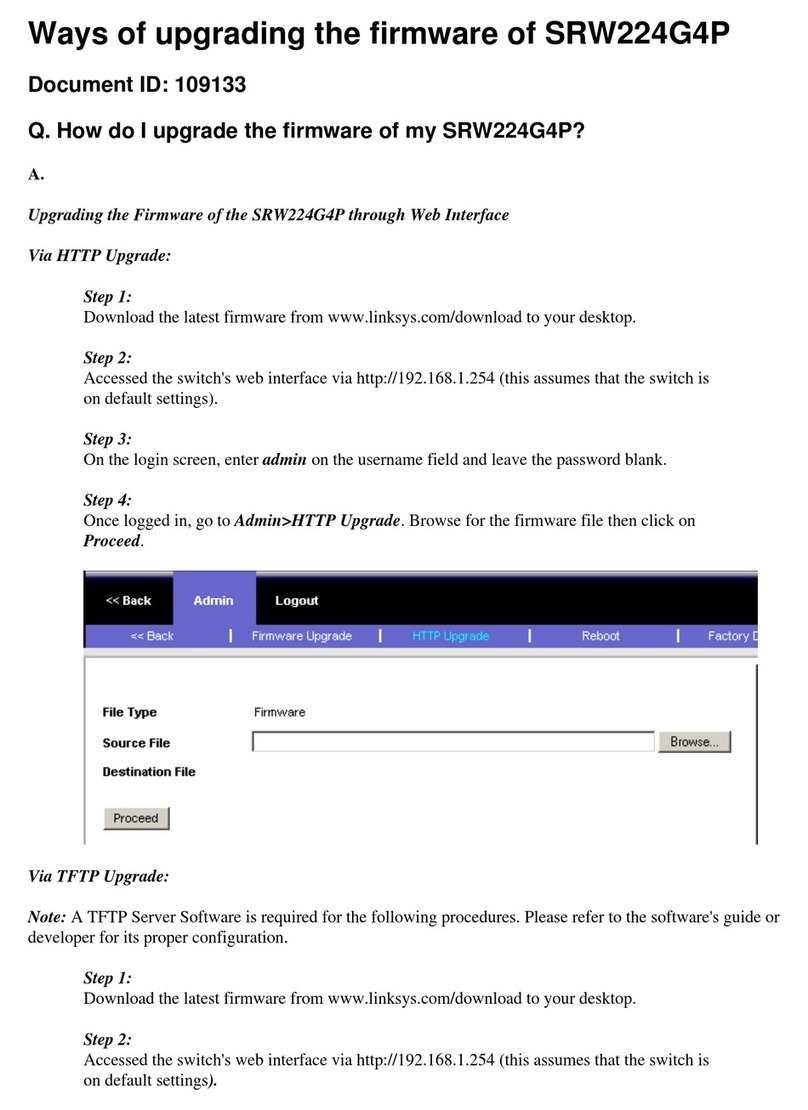
Cisco
Cisco SRW224G4P - Small Business Managed Switch Firmware upgrade guide
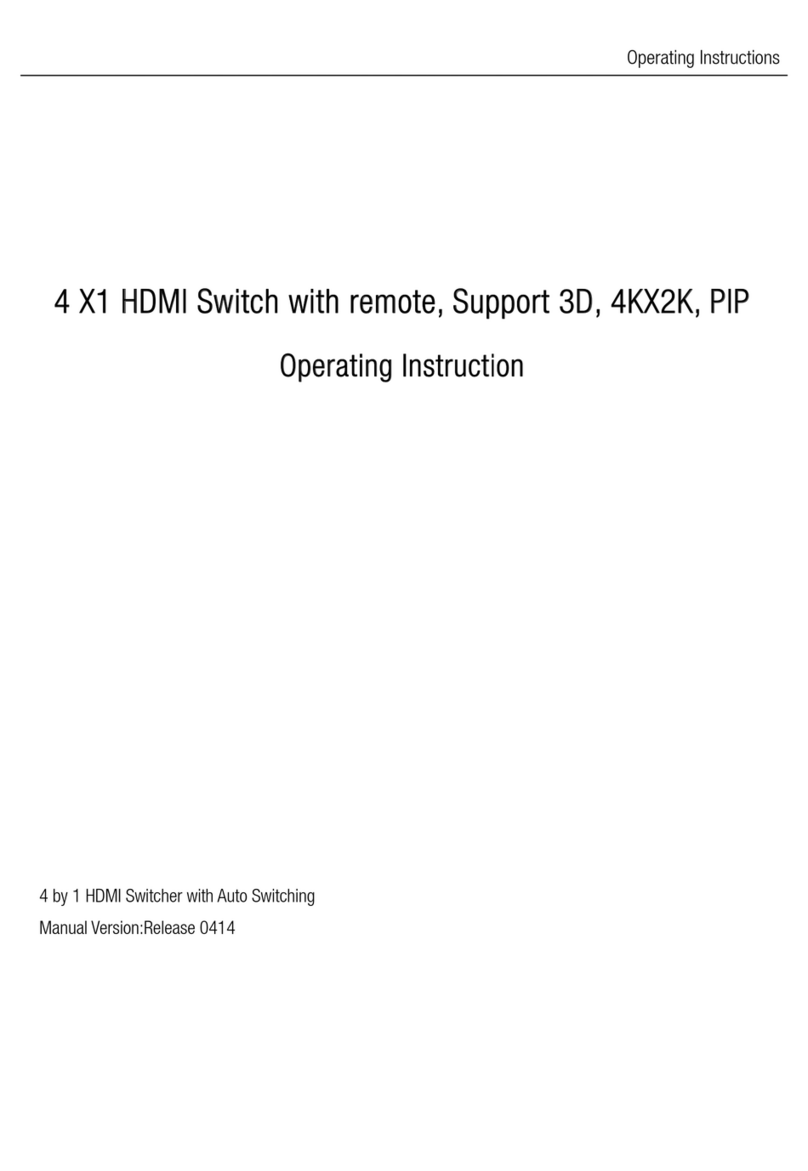
HDMI
HDMI 4 X1 Operating instruction

D-Link
D-Link DGS-1005D - Switch Quick installation guide
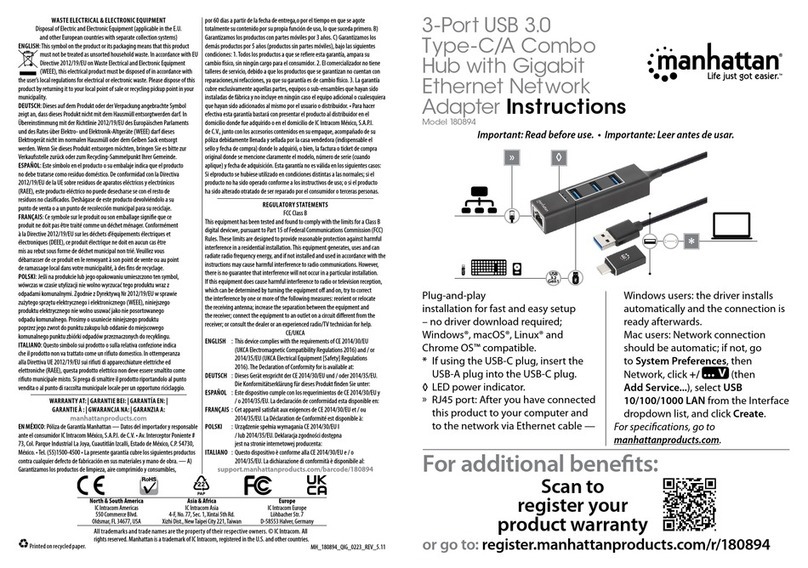
Manhattan
Manhattan 180894 instructions
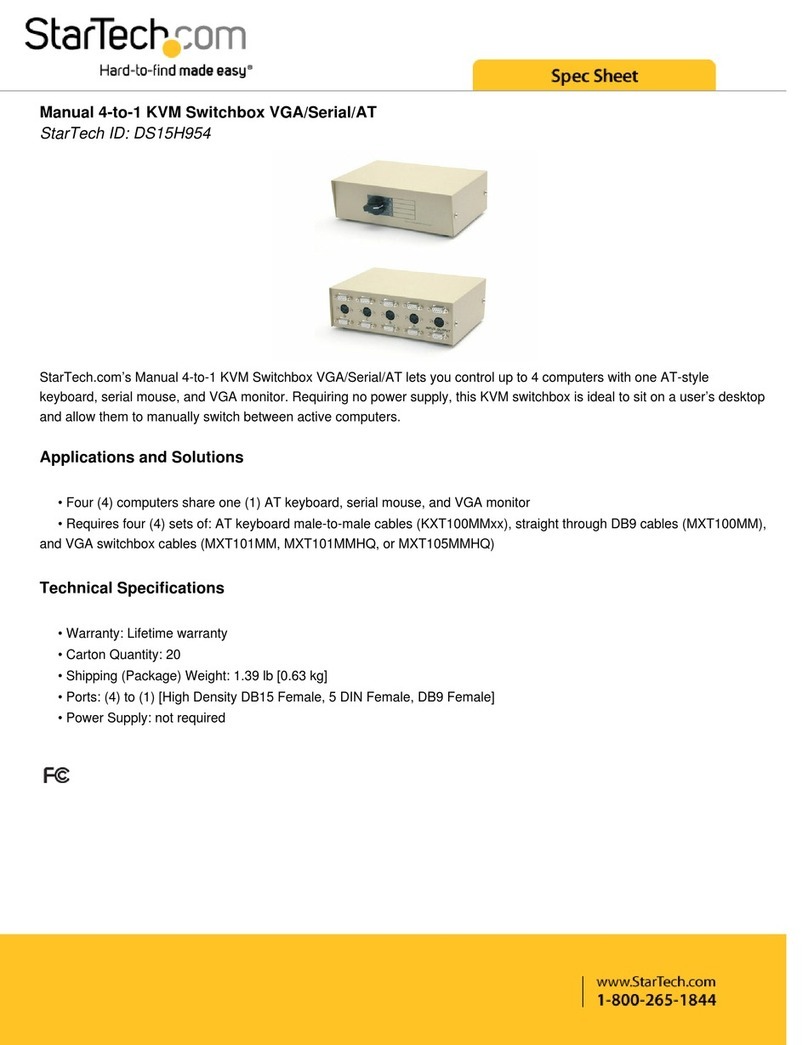
StarTech.com
StarTech.com KVM SWITCHBOX VGA DS15H954 Specifications
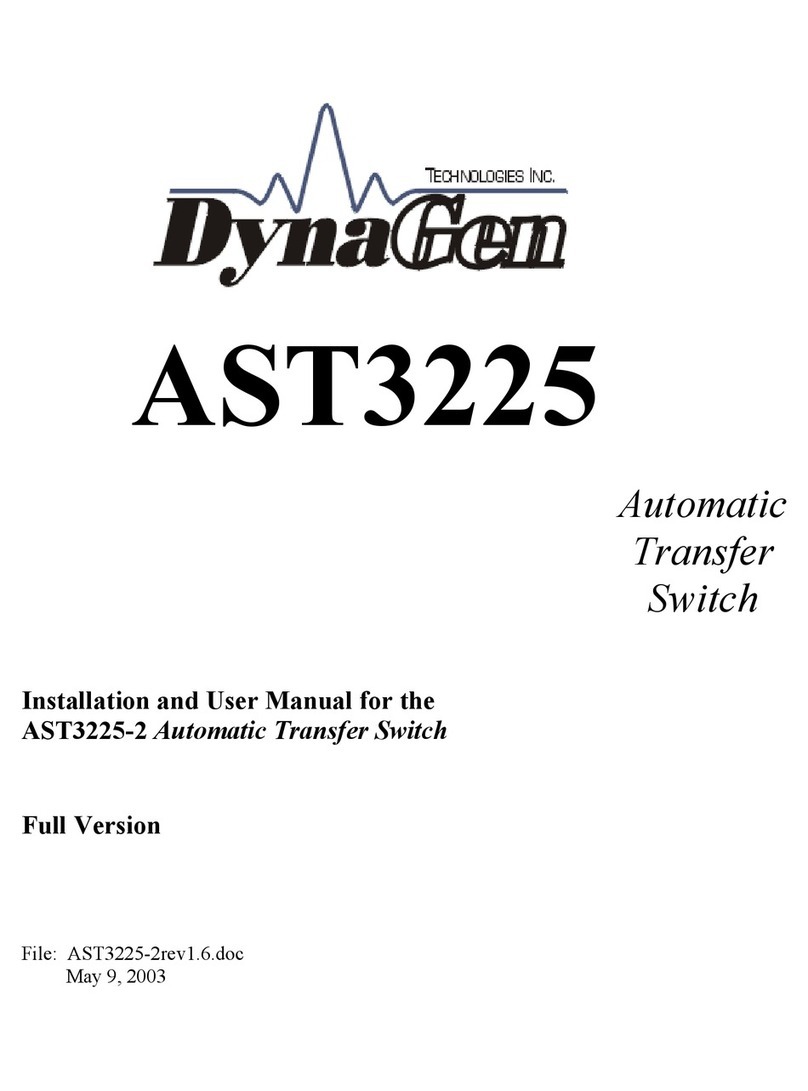
DynaGen
DynaGen AST3225 Installation and user manual
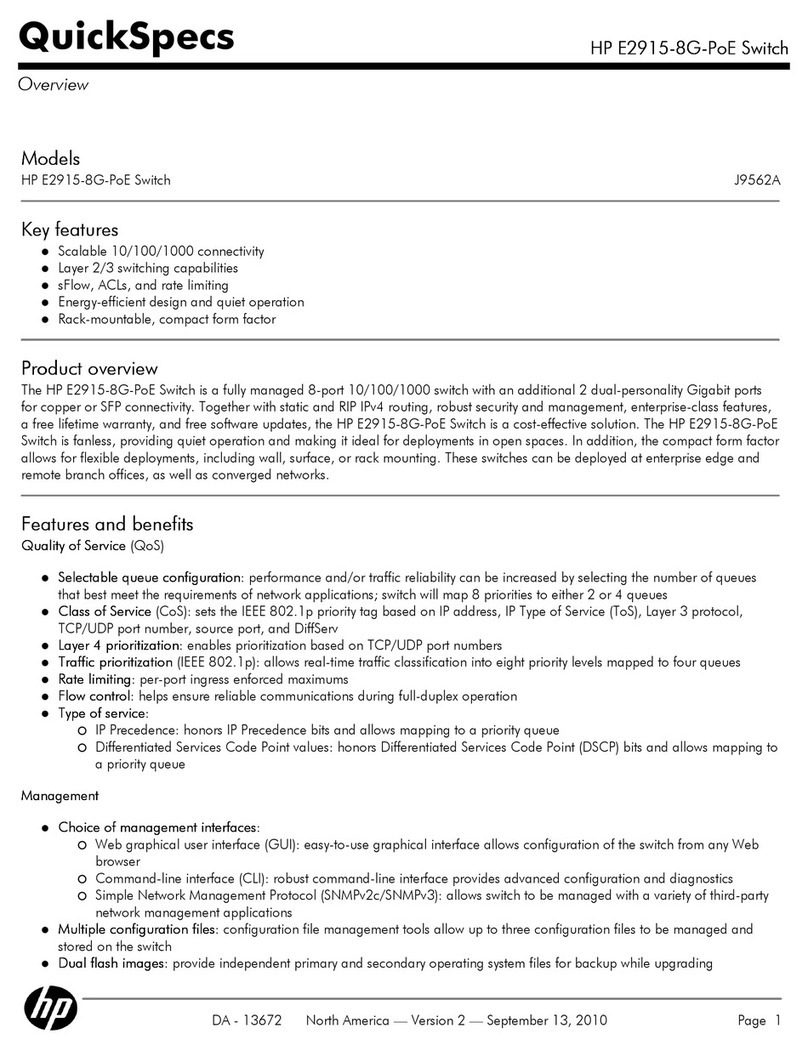
HP
HP ProCurve 2915-8G-PoE Specifications

Generac Power Systems
Generac Power Systems RTSJ200A3 owner's manual

Cajun
Cajun P220G Configuration and operation guide

